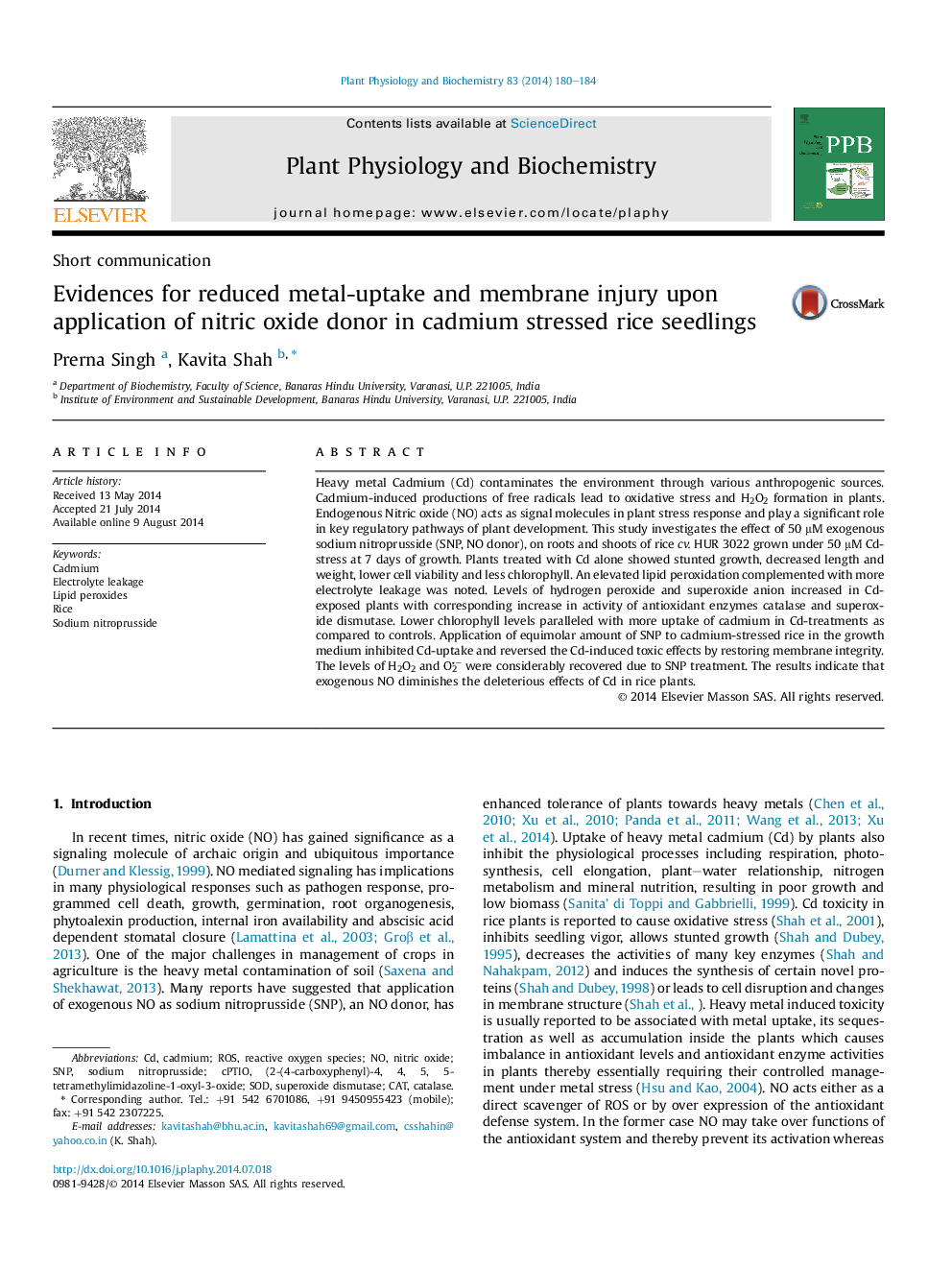| Article ID | Journal | Published Year | Pages | File Type |
|---|---|---|---|---|
| 2015769 | Plant Physiology and Biochemistry | 2014 | 5 Pages |
•The effect of 50 μM exogenous sodium nitroprusside on rice cv. HUR 3022 exposed to 50 μM Cd was examined.•Cd alone led to stunted growth, decreased length/weight, lower cell viability, less chlorophyll.•Increased lipid peroxidation with more electrolyte leakage was noted under Cd stress.•50 μM SNP-treatments to Cd-exposed rice lowered Cd-uptake, reversed Cd-induced toxicity and restored membrane integrity.•The increased H2O2 and O2− levels under Cd-stress alone considerably recovered upon SNP treatment.
Heavy metal Cadmium (Cd) contaminates the environment through various anthropogenic sources. Cadmium-induced productions of free radicals lead to oxidative stress and H2O2 formation in plants. Endogenous Nitric oxide (NO) acts as signal molecules in plant stress response and play a significant role in key regulatory pathways of plant development. This study investigates the effect of 50 μM exogenous sodium nitroprusside (SNP, NO donor), on roots and shoots of rice cv. HUR 3022 grown under 50 μM Cd-stress at 7 days of growth. Plants treated with Cd alone showed stunted growth, decreased length and weight, lower cell viability and less chlorophyll. An elevated lipid peroxidation complemented with more electrolyte leakage was noted. Levels of hydrogen peroxide and superoxide anion increased in Cd-exposed plants with corresponding increase in activity of antioxidant enzymes catalase and superoxide dismutase. Lower chlorophyll levels paralleled with more uptake of cadmium in Cd-treatments as compared to controls. Application of equimolar amount of SNP to cadmium-stressed rice in the growth medium inhibited Cd-uptake and reversed the Cd-induced toxic effects by restoring membrane integrity. The levels of H2O2 and O2− were considerably recovered due to SNP treatment. The results indicate that exogenous NO diminishes the deleterious effects of Cd in rice plants.
Graphical abstractFigure optionsDownload full-size imageDownload as PowerPoint slide
